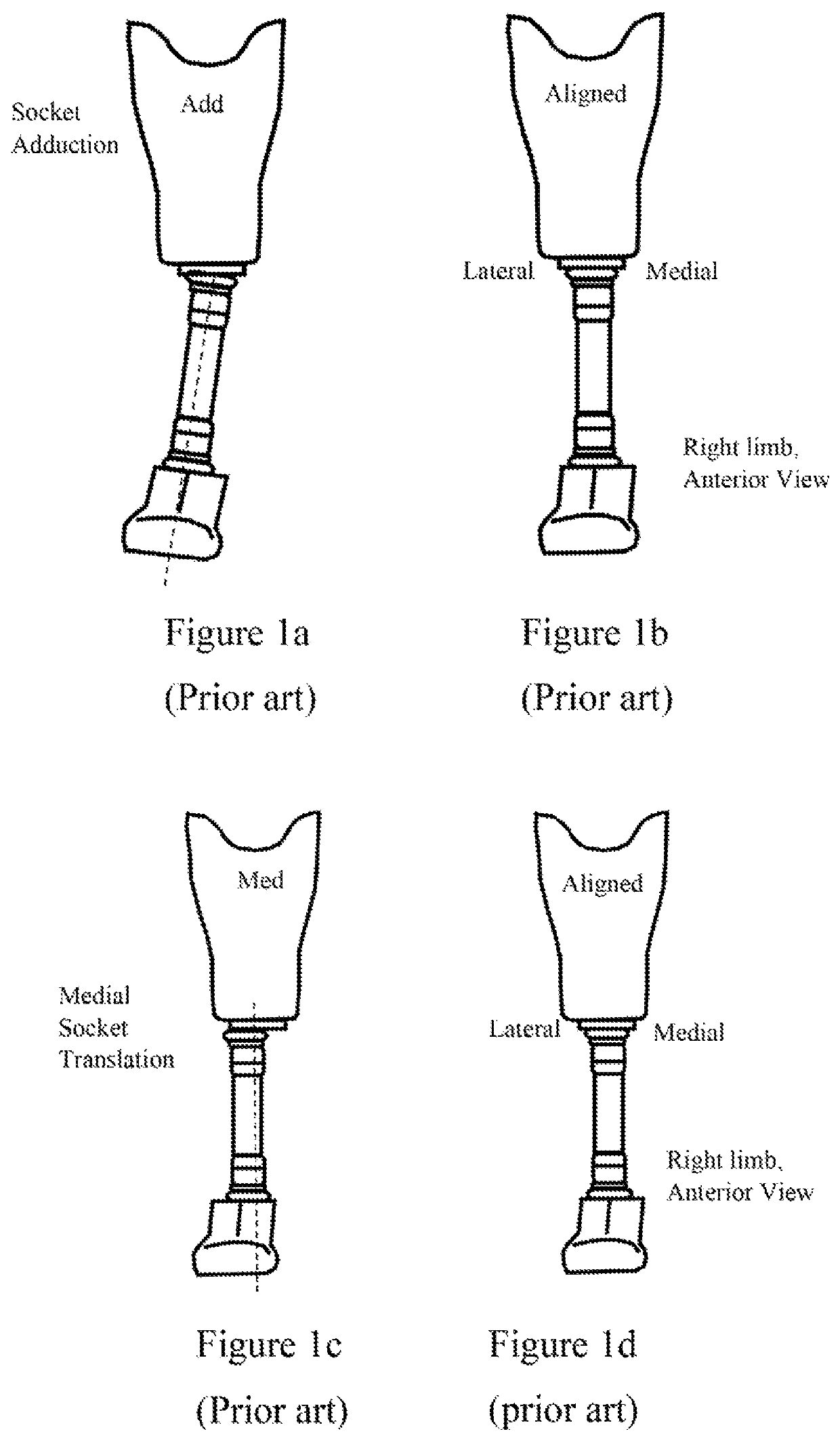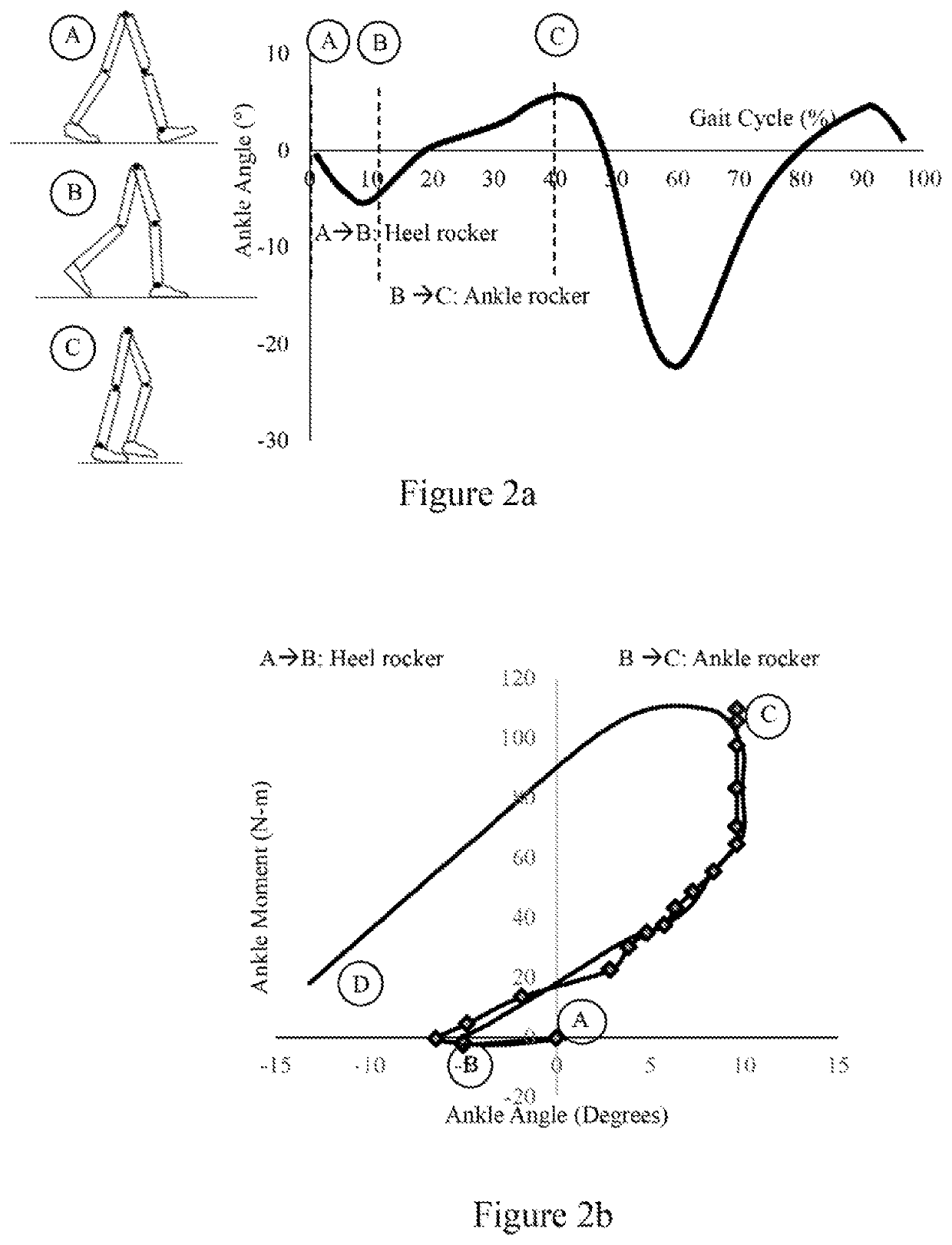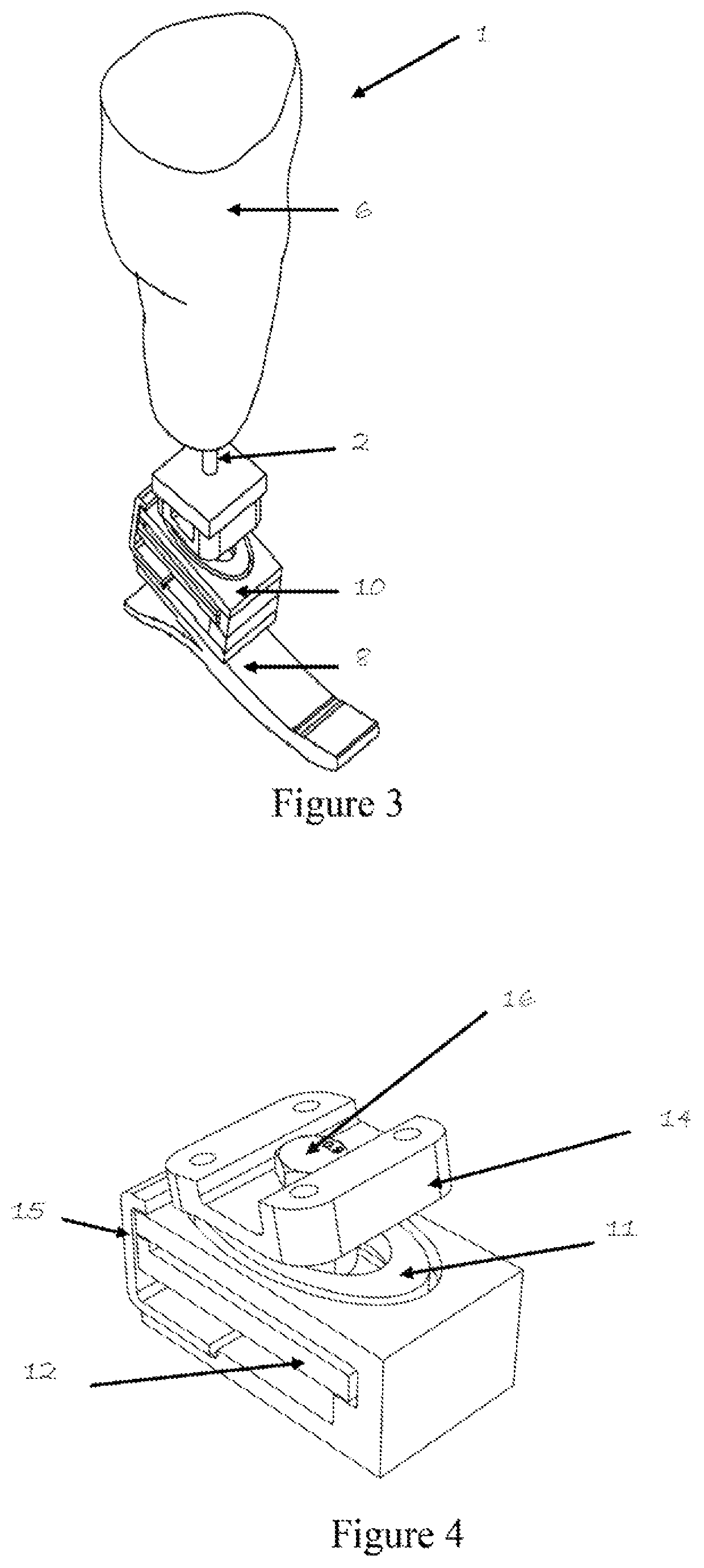Adapter for self-alignment in 3 dimensional planes for passive prosthetics
a technology of adapters and prosthetic legs, applied in the field of adapters in prosthetic legs, can solve the problems of inability to sustain, tendonitis and lower back pain, time-consuming and subjective, etc., and achieve the effects of enhancing agility and performance, and reducing the time of prosthetist car
- Summary
- Abstract
- Description
- Claims
- Application Information
AI Technical Summary
Benefits of technology
Problems solved by technology
Method used
Image
Examples
first embodiment
[0080]our self-aligning adapter shown in FIGS. 3 through 6 is an add-on component. This is a self-aligning adapter that can be mounted on any commercially available foot. Essentially, the adapter is a combination of two planar compliant 6 degrees of freedom springs with unique assembly that allows them to behave non-linearly compliant during heel-rocker and stiff during ankle-rocker phases of the gait. However, other different embodiments of the same core design philosophy are possible. Also, these embodiments can involve different materials (such as aluminum alloys, titanium alloys, carbon fiber composites to name a few).
[0081]A different embodiment of our self-aligning adapter 10 is configuration 20 shown in FIGS. 17 and 18. FIG. 17 shows an exploded view, while FIG. 18 is an end view. This embodiment is made stiffer by modifying spiral geometry and employing a different material thereby rendering the use of stiffener 15 unnecessary.
[0082]The embodiments shown so far are for the p...
embodiment 30
[0083]One such embodiment 30 is shown in FIGS. 19, 20 and 21. This embodiment has heel spring 31 similar to low stiffness spring 11 and a keel 32 which is functionally similar to high stiffness spring 12. This embodiment has a different connector 33 on the top to connect to the pylon 6 or socket 2.
[0084]Another embodiment of our self-aligning adapter 10, integrated to an ankle-foot is configuration 40, shown in FIGS. 22 and 23. Another embodiment 50 is shown in FIGS. 24 and 25. These embodiments have two planar springs 41 and 42 or 51 and 52 that look different but have the same functionality. One spring 41, 51 is a low stiffness spring. The other spring 42, 52 is a high stiffness spring. The spring stiffener 45, 55 is shown in each of these embodiments as wire-like structures to reduce weight, but solid structures like spring stiffener 15 shown in FIG. 4 can also be used. All these embodiments utilize the connector 14 as well as bolt 16 and nut 17 that are in the first embodiment.
embodiment 60
[0085]Another possible embodiment 60 is shown in FIGS. 26 and 27 where the heel part of the foot is modified to function as the low stiffness spring 61 and another part of the foot act as the high stiffness spring 62. A non-linear stiffener 65 is connected between the two springs 61 and 62. There is a different connector 66 that is used to attach this embodiment to a pylon or leg socket. In this embodiment the foot keel (top plate) itself works as the high stiffness spring 62. The heel part of the foot is attached to it through a planar compliant structure. This low stiffness 6 degree of freedom spring allows the heel to produce the biomimetic heel-rocker region. After that, the wire-like spring stiffeners 45 become taut, and the foot keel starts to deform to produce the ankle rocker phase. This design can be a one-piece (no assembly) product, hence no exploded view is shown.
[0086]In another possible embodiment 70 shown in FIGS. 28 and 29 the relative position of the two 6 degrees o...
PUM
 Login to View More
Login to View More Abstract
Description
Claims
Application Information
 Login to View More
Login to View More - R&D
- Intellectual Property
- Life Sciences
- Materials
- Tech Scout
- Unparalleled Data Quality
- Higher Quality Content
- 60% Fewer Hallucinations
Browse by: Latest US Patents, China's latest patents, Technical Efficacy Thesaurus, Application Domain, Technology Topic, Popular Technical Reports.
© 2025 PatSnap. All rights reserved.Legal|Privacy policy|Modern Slavery Act Transparency Statement|Sitemap|About US| Contact US: help@patsnap.com



